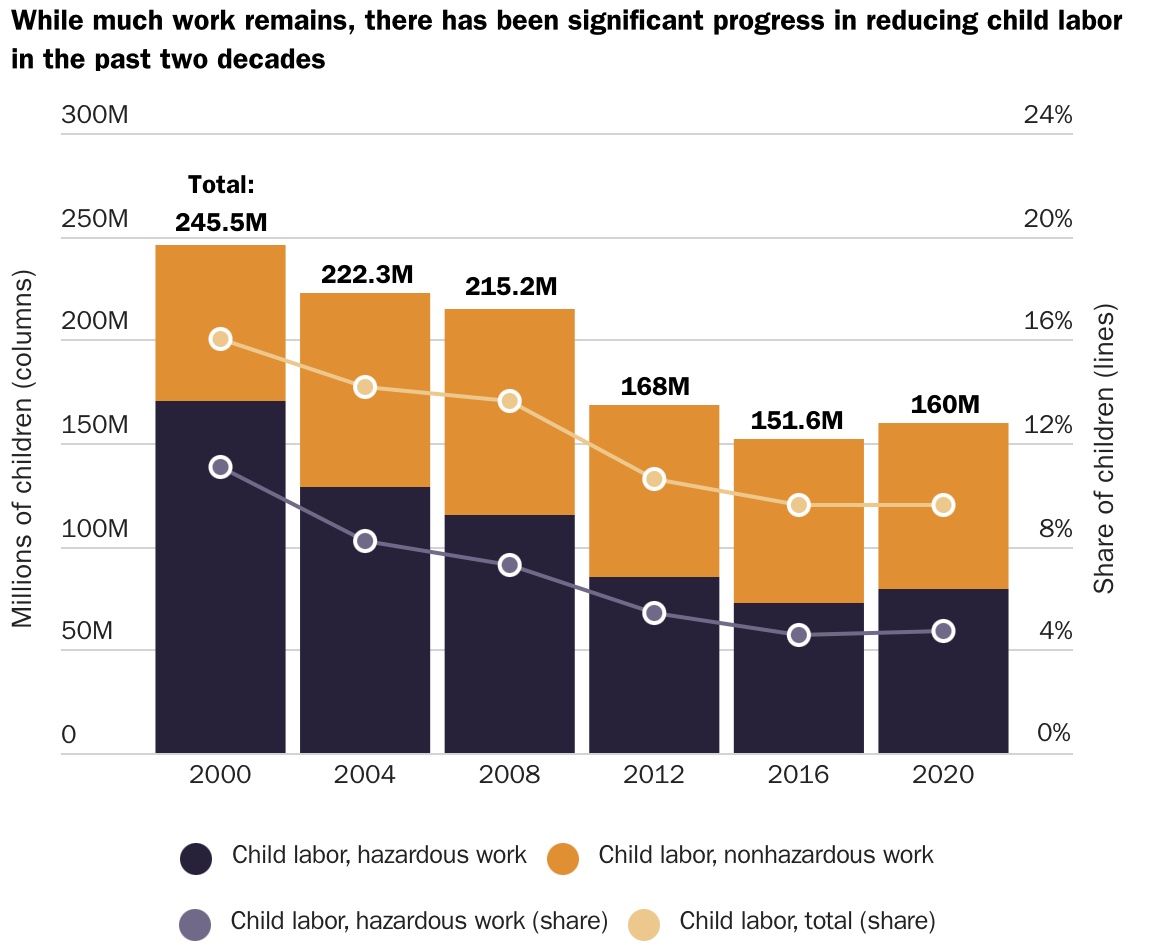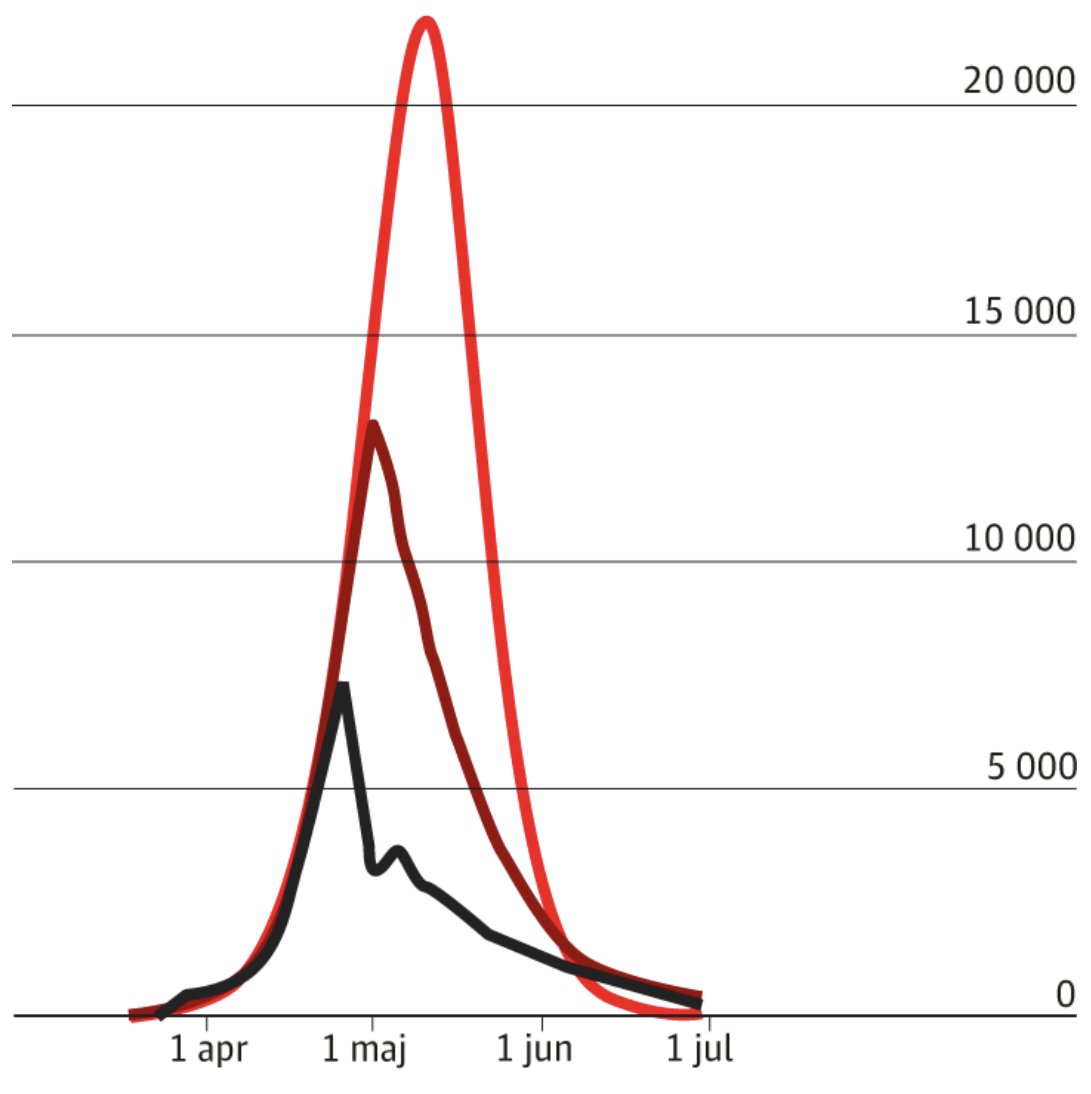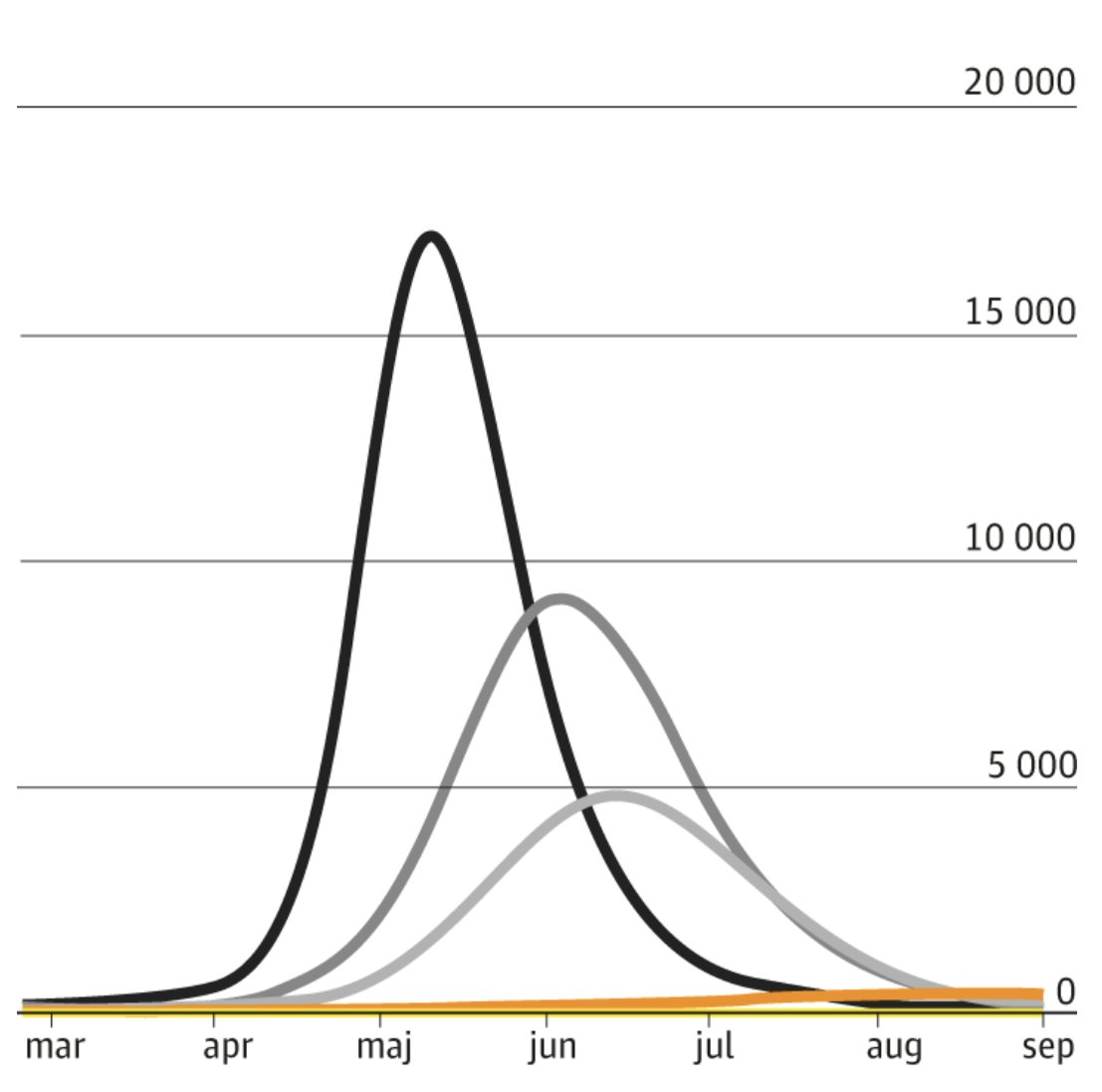What happened to the “race to the bottom”, the most popular anti-globalization theory around 2000? Stiglitz et al warned we’d see more poverty, child labor and pollution as countries lowered standards to attract global capital. Well, every prediction turned out to be false. 🧵 

The share of workers in extreme poverty declined faster than ever before, from 26% to 6% between 2000 and 2022. 

Global working conditions improved. WHO and ILO records a “substantial reduction in the total work‐related burden of disease” 2000-2016. The global rate of deaths related to work declined by 14%. 

The thing is, capital doesn’t search for the poorest places (they are usually poor because it’s difficult to do business there). More importantly, when trade and capital actually head for poor countries, they raise productivity and so also raise wages and standards. 

Neither is there an environmental race to the bottom. As countries get richer, they invest more in green tech and environmental performance. Remarkably, environmental protection is now better in big middle-income countries than it was in Sweden, the UK and US in 1995. 
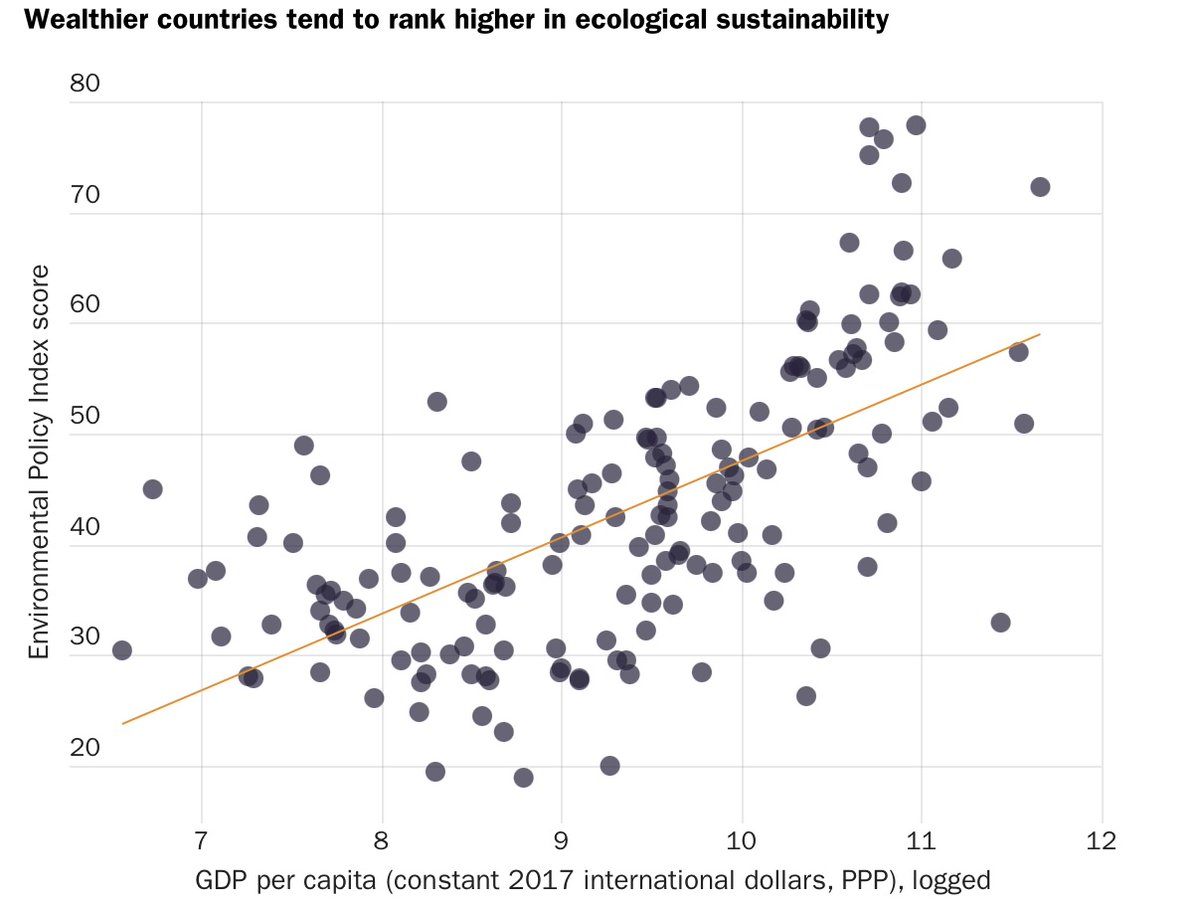
In conclusion, the race to the bottom is a myth. If anything, globalization and free trade have set off a race to the top. I’ve just published this paper about it in Cato’s Defending Globalization-series. #CatoGlobalization
cato.org/publications/g…

cato.org/publications/g…
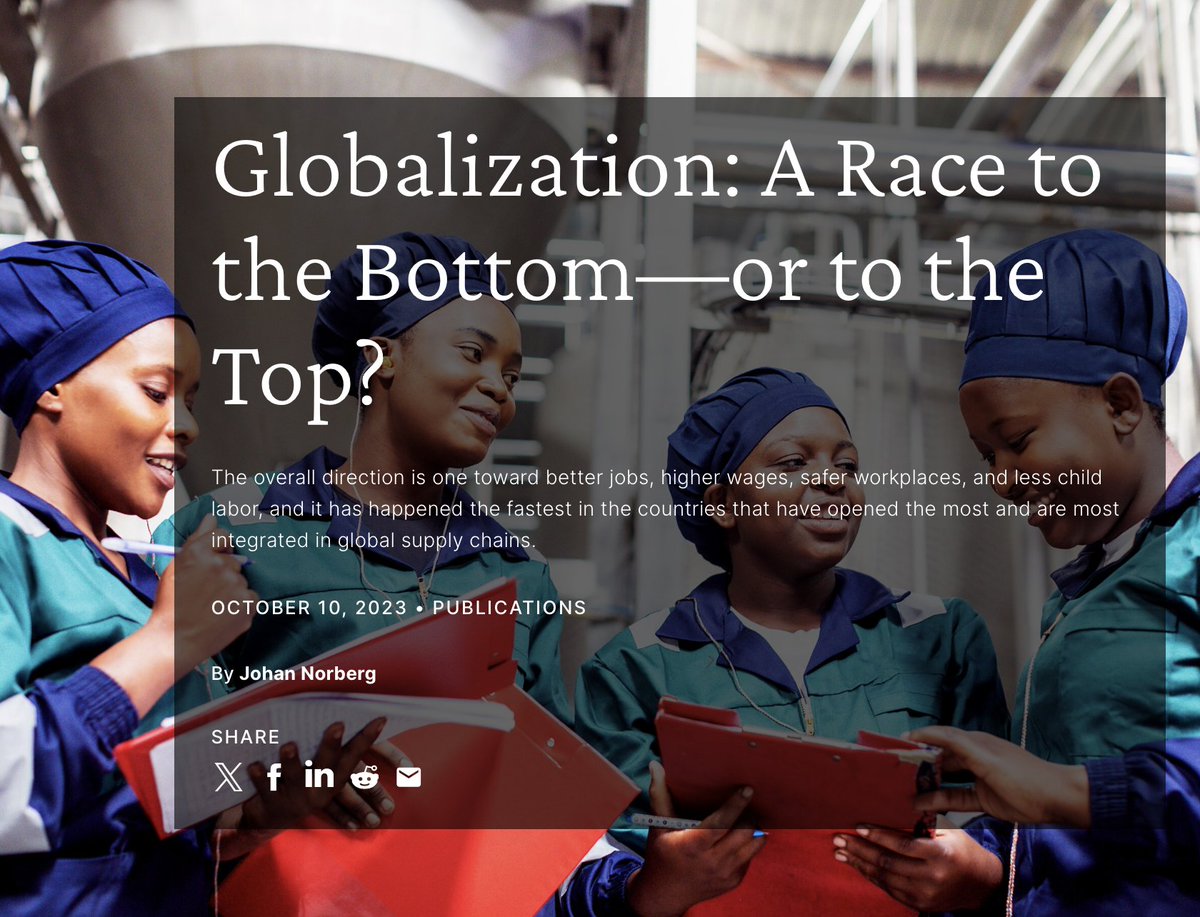
• • •
Missing some Tweet in this thread? You can try to
force a refresh

 Read on Twitter
Read on Twitter
